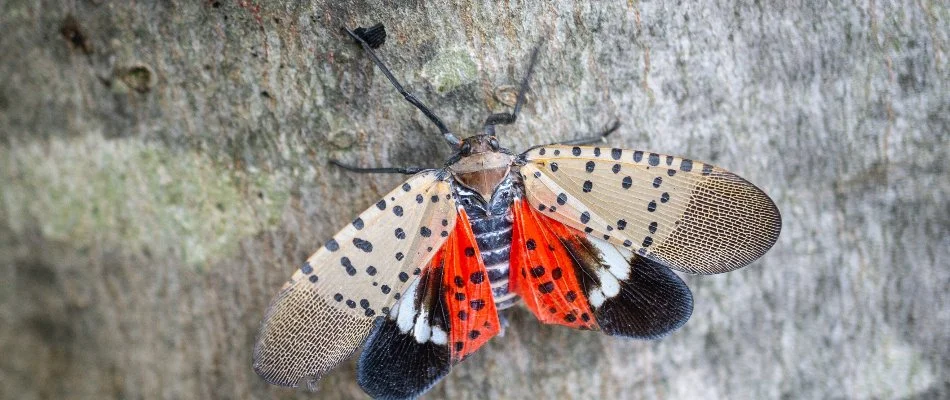Spotted Lanternfly Control Service in White Plains, Scarsdale, NY, Greenwich, CT & Surrounding Cities
Curative treatments are available to eliminate an active spotted lanternfly infestation.
Spotted lanternflies are invasive pests that can cause significant damage to your trees. Fortunately, we are here to help ensure that doesn't happen! At Bellantoni Landscape, we offer a spotted lanternfly control service that includes an initial inspection of your property to identify the severity of the infestation and which plants are being affected by these pests. Then, we will apply our curative treatment to eliminate them so they can't continue causing problems. What's more, we also offer a tree care program that includes fertilization treatments and routine monitoring for insects and diseases, allowing us to catch any issues early on and keep your trees healthy.
We offer our spotted lanternfly control service to residential properties in White Plains, Scarsdale, Bronxville, and nearby areas in New York and Connecticut, like Greenwich. Give us a call at (914) 948-6468 to schedule this service today!
An Inspection Will Be Performed to Determine the Extent of the Spotted Lanternfly Infestation

When you sign up for our spotted lanternfly control service, we will start by performing an inspection of your property. During this inspection, we will look for signs of a spotted lanternfly infestation, identifying which plants are affected and the severity of the issue. Once we have determined the problem areas, we'll discuss our findings with you and provide recommendations on how best to proceed. This way, we can tailor our approach to meet your specific needs.
Curative treatments are applied to eliminate spotted lanternflies on your trees.
At Bellantoni Landscape, we use top-of-the-line products when treating trees for spotted lanternflies. After confirming these pests are what's causing problems for your plants, we will administer our curative treatment to get rid of them once and for all. This product is very effective against spotted lanternflies, eliminating them to ensure they can't continue to damage your trees.
Keep your trees healthy and free of spotted lanternflies in the future with our tree care program!
While our spotted lanternfly control service will effectively eliminate these pests from your trees, you'll want to do everything you can to keep them healthy and free of these pests in the future. That's where our tree care program comes in! When you sign up for this program, we will visit your property six times from April until September to monitor your trees for any potential issues like insect infestations or diseases. If anything is found during one of our visits, we will recommend a course of action to remedy the issue. Additionally, we will administer fertilizer treatments to your trees to provide them with the nutrients that they need to thrive!
Call Us Today to Sign Up for Our Spotted Lanternfly Control Service
Don't let spotted lanternflies take over your trees - instead, leave it to us to tackle these invasive, harmful pests! At Bellantoni Landscape, we use high-quality products that are proven effective against these pesky insects so you don't have to worry about them damaging your plants anymore. We've been keeping trees and shrubs healthy since 1963, so you can rest assured that we'll give you the same high-quality results we're known for.
Our spotted lanternfly control service is available to residential property owners in White Plains, Scarsdale, Bronxville, and surrounding cities in New York. We also serve in and around Greenwich, CT. Call us today at (914) 948-6468 to sign up for our spotted lanternfly control service!


